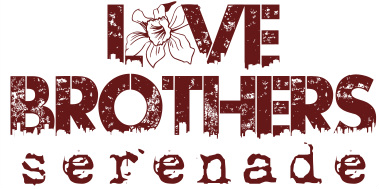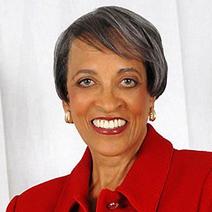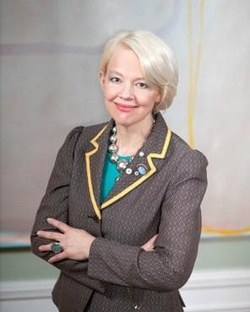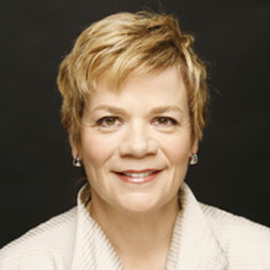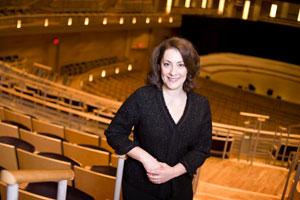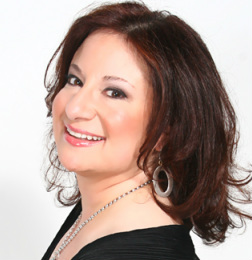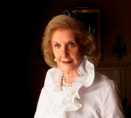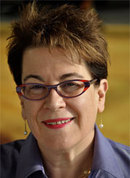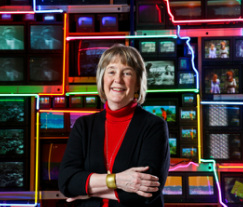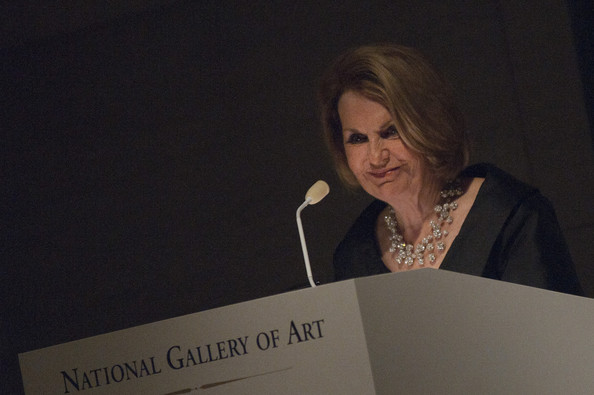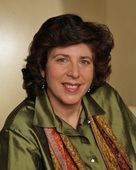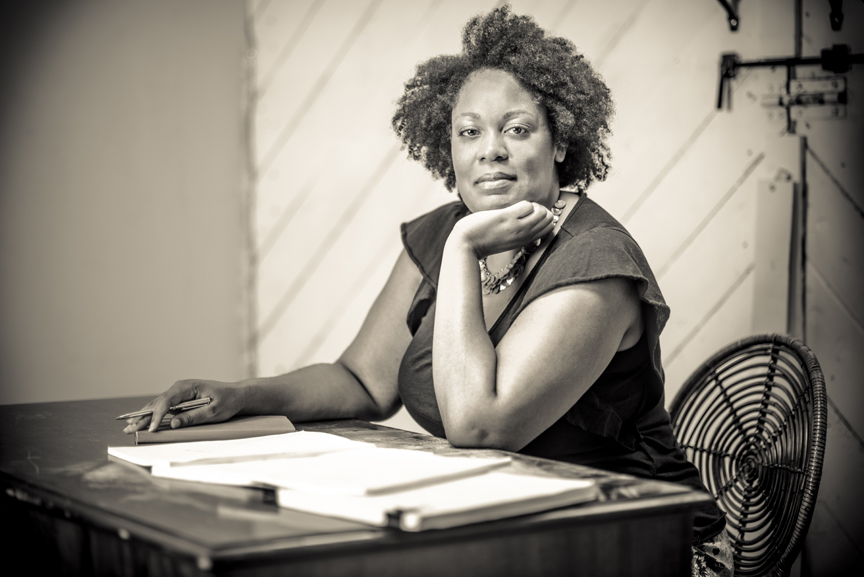|
This morning, the wonderfully informative, inspiring and addictive newsletter Brain Pickings featured Bird by Bird by Anne Lamott. I first read Bird by Bird in college. Originally, I had enrolled at UT as a journalism major. I quickly realized that I wouldn't be able to tell the truth in that field ... at least not the way I understood truth at that time. So, I switched my major to screenwriting and took every playwriting and performance ethnography classes that were offered.
After my first playwriting class with Amparo Garcia Crow, I bought Bird by Bird from the Barnes and Nobles on the Drag in Austin. (The store has since along with many old haunts as since closed.) It's a witty, wonderful book, quite worn with wear, that I return to now and again for inspiration and solace. One the quotes that Maria Popova, references is one that deeply resonates with me: "As we live, we begin to discover what helps in life and what hurts, and our characters act this out dramatically. This is moral material. … A moral position is a passionate caring inside you. We are all in danger now and have a new everything to face, and there is no point gathering an audience and demanding its attention unless you have something to say that is important and constructive. My friend Carpenter says we no longer need Chicken Little to tell us the sky is falling, because it already has. The issue now is how to take care of one another." "How do we take care of one another?" I ask this question a lot. I ask it in the face of senseless and harrowing accounts of callous disregard for human life. I ask it as the gap between the wealthy and poor continues to increase at staggering rates all the while services to the poor are threatened and slashed. I ask it when thinking about the nation's failing education system and the beyond broken prison system. I ask it in the wake of reports of bullying, rape, child abuse and the recent reports of the knockout game. I'm overwhelmed by these ceaseless breaking news reports and editorials that attempt to capture the violence and articulate the cause. I'm often inundated with fear, anger, sadness, frustration and a sense of helplessness. Where is the human decency and personal integrity in all of this? Why are we ruled by pride and not humility, honor and common sense? Why is there so much anger? How do we shift this anger into something positive and productive? How have we failed each other, this generation? How do we teach our youth that there is something beyond themselves that they can serve, be it spiritual or for the good of mankind? Trying to answer these questions is why I wrote LOVE BROTHERS SERENADE, a hiphop infused drama that follows two young men, Reynaldo and Ricardo, as they struggle for survival and fight to forge their own identities in DC's inner city ghettos. It explores the impact of neglect, systemic racism, and gentrification on inner city communities, the effect of which creates an environment ripe for street gangs, violence, and drug/alcohol abuse. This play has received a lot of attention lately. It was a 2013 Semi-finalist at the O’Neill Playwrights Conference and recently a finalist for the Source Festival Full-Length Plays. I hope it finds a home somewhere, because the community engagement work that I want to do around this play involves educators, artists, social workers, policy makers, religious and civic leaders, and most importantly, young people. With this play. I want to try to find answers to how we better care of one another. As a theatre artist, this is one way that I can start the dialogue and mobilize action for change
0 Comments
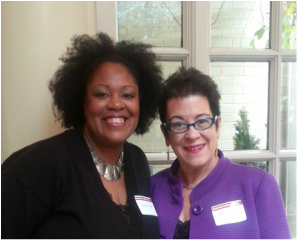 Each year, the Washingtonian publishes its list of 100 Most Powerful Women. This year’s list included 117 of the area's most influential women working in the arts, business, education, government, health, law, media, and nonprofit fields. The invitation asked that each honoree bring as their guest a woman with talent and tenacity whom the Washingtonian should watch in the future. The women were honored at a luncheon that was held in the beautiful Colonnade Room of the Fairmont Hotel in Georgetown. Click here to view photos from the event. The only reason I know about any of this is because on Monday morning Molly Smith, Artistic Director of Arena Stage, invited me to attend as her guest. I was honored, delighted, and quite simply floored. You could’ve knocked me over with a feather. As the leader of one of the preeminent regional theatres in the country, I have long admired Molly for her vision, ambition and passion. It was inspiring and empowering to spend time with her at this most prestigious event. Our Esteemed Host and Honored Guest SpeakerWashingtonian’s President and Publisher of Washingtonian Media Cathy Merrill Williams opened the event by sharing a powerful personal story. She and a group of close women friends were skiing in the Pacific Northwest on a mountain range along the border of Washington State and Canada. Cathy was sure to point out that she is a highly skilled and experienced skier. When she felt the snow moving beneath her, she knew immediately what was happening. She knew that she needed to pull the avalanche cord, a colored line that helps rescuers locate a skier if caught and buried in an avalanche. But she didn’t. She thought to herself, “I got this.” Moments later, she found herself covered in snow up to her neck. Thankfully, her friends and guide were there to help dig her out of the snow. She reminded us that in our day to day efforts and struggle for success, our ego can get in the way. Confidence can cloud hard experience, truth and knowledge. We should to do our best to check our ego at the door. When it does make its way through and we find ourselves trapped beneath 5 feet of snow, we should never to be too proud to accept the help of others who care about us. Then guest speaker Chris Simmons, Pricewaterhouse Coopers’ Managing Partner, took to the podium. He spoke to us quite candidly. He told us that if you’re married, an organization may feel entitled to pay you less money and that regardless of our achievements and accolades, men still run the world and they knew it. He reminded us that “Whoever people choose to have around them in their relaxed moments, those are who they will support and promote.” This is why he encourages women in power to “use your positions to make systemic changes within your organizations, but also to support other women. Each of you has the credibility to tell other women how extraordinary they are.” He believes in Gender Parity. He knows that you can’t have a solution to a problem when you exclude half the population. “There are good answers to problems that aren’t being addressed because women aren’t invited to the table.” He reminded us that while we all have our struggles, we can help each other. Lastly, he spoke about the merits of Lean In by Sheryl Sandberg. He appreciates that in her book, Sandberg asks women to choose partners, who will support and stand by us, and not get in the way of our success. He also like that she asks us to think about, “What would we do if we weren’t afraid?” He encouraged us to be fearless in our ambition, steadfast in our efforts and courageous in all that we do. It was a refreshing, enlightening and empowering speech. 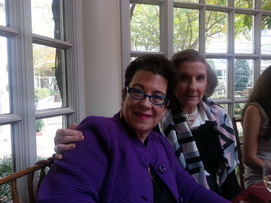 We dined on an absolutely delicious meal: a mixed green salad with some kind of new-age egg that was made of something that wasn't an egg at all followed by chicken for the meat eaters and spinach lasagna for the vegetarians. We were also served some rather fancy wine. This was quite the "Ladies who Lunch" affair! Seated at our table was none other than Wilhelmina Cole Holladay, founder and chairman, of the National Museum of Women in the Arts. At 91, she is sharp, convivial, and lovely. I couldn't help, but share that I had visited the gallery recently to take in the exhibit, American People, Black Light: Faith Ringgold’s Paintings of the 1960s. She smiled with such delight and told a few personal stories of her and Faith. Throughout the event, Molly introduced me to a number of nominees and we also sought out a few to meet together. And we talked. She spoke about the trajectory of her career, the personal and professional challenges that she's faced and overcome, and the impact she hopes to make on the D.C. community and the American Theatre. And as a true mentor, we spoke about my dreams and ambitions and about where I am in my life ... this exhilarating and frightening transition that is fraught with such potential and uncertainty. She was excited for me and gave me some much-needed encouragement and advice. 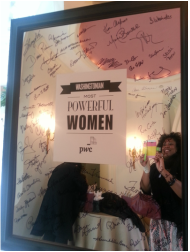 As the event came to a close, my heart swelled with such appreciation and I felt so fortunate to be in this room filled with so many accomplished women. I thought about how far I had come from my days as a poor Texas farm girl, who was filled with so many dreams for what my future could be. I am where I am today because of parents who believed in me and instilled in me a thirst for knowledge, and because of the many amazing mentors in my life. All of which have been women. I left the event feeling inspired and invigorated, and also more grounded and hopeful than I have in such a long time. Thank you, Molly, for your time, support and enthusiasm. Thank you Washingtonian and PWC for celebrating the hard work and achievements of women in the Washington area. Click here for a full list of the nominees and see below to learn more about the Arts and Letters nominees. Arts and Letters Honoree BiosMarin Alsop, musical director, Baltimore Symphony Orchestra. Alsop is the maestra with the mostest at the Music Center at Strathmore, where the BSO plays a third of its concerts. Jenny Bilfield, president and CEO, Washington Performing Arts Society. Bilfield is the area's major performing-arts producer, bringing artists of all genres to audiences in many venues. The first woman to head the WPAS, she came from Stanford in January with expectations to bring more contemporary artists to local stages. Elizabeth Broun, Johnnetta B. Cole, and Kim Sajet, directors, Smithsonian museums. Broun (American Art Museum), Cole (National Museum of African Art), and Sajet (National Portrait Gallery) run three of Washington's major museums, including laboratories in each where visitors can observe the conservation of invaluable works of art. Monica Jeffries Hazangeles, president, Strathmore. Hazangeles took over the arts center from Eliot Pfanstiehl (now CEO) in 2010, after serving as executive vice president and heading a $110-million campaign to raise funds for organizational development and a long-term endowment. Strathmore is bursting with artistic energy both in its education programs and on its stages. Wilhelmina Cole Holladay, founder and chairman, National Museum of Women in the Arts. The cultural visionary used her personal collection to create an institution that spotlights women's long-ignored artistic endeavors. Victoria Sant, president of the board, National Gallery of Art. A major philanthropic force in Washington, Sant has supported not only the National Gallery but also the Summit Foundation, the Smithsonian, and Vital Voices. Sky Sitney, director, AFI Docs. The documentary-film festival has grown to include 53 works shown in venues in Silver Spring and downtown DC, attracting thousands and offering opportunities for filmmakers to meet with policymakers. Molly Smith, artistic director, Arena Stage. The queen of DC's theater scene helped shepherd One Night With Janis Joplin—which had successful runs at Arena both last fall and this summer—to Broadway, where the Randy Johnson-directed production opened in October. Francesca Zambello, artistic director, Washington National Opera. Zambello took over from Plácido Domingo in 2012, cementing the WNO's merger with the Kennedy Center. She's also responsible for directing the Young Artist Program and commissioning new works. In her spare time, she directs one opera each season at the WNO and heads the Glimmerglass Festival in Cooperstown, New York.  The Washingtonian, the magazine Washington lives by, is the region's top source of information for dining, shopping, entertainment, and personalities. It has been Washington's most trusted guide to living, working, and playing in the area for more than four decades thanks to features like "100 Very Best Restaurants," "Top Doctors," and "Great Places to Live." The magazine is read each month by more than 400,000 people, who spend an average of 96 minutes with each issue and save each issue for an average of five months. The Washingtonian, under the guidance of its longtime editor, Jack Limpert, is a five-time National Magazine Award winner for its reporting and writing. Washingtonian.com, the online extension of the magazine, helps hundreds of thousands of residents and visitors explore and live in the nation's capital. From planning a night out on the town to locating the best pediatrician or lining up a new hairstylist, Washingtonian.com is the region's premier destination for lifestyle information. Through online chats with editors, online columns, events calendars, and blogs, the site helps readers keep up with everything happening around them. Whether you're contemplating moving and want to know the area's best places to live or contemplating switching jobs and want to know the region's best places to work, Washingtonian.com is the national capital region's one stop for trustworthy, dependable, and thoughtful advice I'm back from TCG's Fall Forum on Governance, an event that brings together theatre trustees and senior staff from across the nation. This year's theme was “Investing in Vitality: Actions Plans and Honest Dialogue to Strengthen Capitalization and Diversity.” We spent the weekend discussing how a strong business model rooted in diversity and inclusion and based on a long-term financial plan will better serve a theatre’s company's mission, vision and purpose as well as its community. It was a powerful, engaging, informative and emotionally/politically charged convening that focused on intersection of diversity, inclusion, artistic freedom and financial health. I’ll be capturing my notes and reflections on TCG Circle’s Diversity and Inclusion Salon. By Sunday evening when I arrived at Penn Station, I was exhilarated, but exhausted. I was also in pain from having sustained an accidental self-inflicted hot water second-degree burn on my thumb. Don't worry, I’ll spare you the details and photo! The train was 45 minutes late and overcrowded. Couples and families were split apart and strangers were seated side-by-side. Most folks plugged into electronic devices right away. All around me, people were listening to music, watching movies, working on spreadsheets, writing reports and sending emails. I thought about working, but couldn’t summon the focus or strength. Instead, I rested and thought about the uncertainty and exciting possibilities that lay ahead. Doing so, allowed me to overhear a touching and unexpected conversation between the two men seated in front of me. One was older, in his late 30s, the father of a 7 year old girl. The other one was a junior in college, in his early 20s. The conversation began in Trenton, where the Young Man had boarded. My ear picked up their conversation when the Young Man started speaking about the differences between Princeton and College Park as college towns. The Young Man was from a small town in the Midwest and then had transferred from UMD to Princeton in August. He was still trying to get used to everything. After spending most of my life in a farming/cattle ranch community, before attending undergrad and grad school in Austin, TX, I understood what he meant by getting used to everything. Austin is great college town, but it’s also a big music town that hosts the ever-popular SXSW Festival, has a lot of great food and excellent outdoor activities. While worlds apart in many ways, both College Park and Princeton have beautiful scenic campuses, are peopled with brilliant, accomplished and creative minds, and rest in close proximity to the nation’s most exciting, international cities. The Older Man suggested that part of the Young Man's trouble was that New Jersey has an identity problem. “Princeton is a great school, one of the best schools, but I would never want to live in Jersey. But because of work, I’ve spent time in a few major cities and the shore. One on one, New Jersey has some nice cities, as beautiful as any city in America. But, for some reason, somewhere along the way, the state got a bad reputation and it stuck. You know, the whole armpit thing” The Older Man then recommended that the Young Man take a few weekend trips to New York and mentioned that the last time he was there, he saw Avenue Q. This, as you can imagine, delighted me to no end. Usually, I'm the person on the train that tells strangers to go see theatre in various cities. Now, the Young Man had never heard of Avenue Q, so the Older Man explained that it was an irreverent “parody, riff, take” on Sesame Street. “Instead of counting and the ABC’s, we learn that everyone is racist and sexist and that we’re all basically good people who do bad things sometimes and have all kinds of issues. It was the funniest, smartest thing I’d ever seen.” The Older Man then asked the Young Man if he had ever watched Sesame Street. The Young Man replied, "Of course, I grew up on it." The Older Man confessed that he hadn't watched it growing up, but does now with his daughter. Then, he started talking about the puppetry of the Lion King and tried to connect with regards to the history of puppetry. He wasn't quite getting right, which made me want to interject and launch into my Intro to Theatre lecture about the history of puppets and the impact of The Lion King on puppetry in the American Theatre, but I didn’t and I'm glad. If I had, it probably would've prevented what became the most amazing unscripted conversation I've ever eavesdropped on in my life. When talk turned to the Lion King, the Young Man got excited, because had seen it with his parents. They talked about how the Broadway production was so different and even more beautiful than the movie. The Older Man shared that he thought Scar was a terrible villain, because he killed his own brother to be king. To this, the Young Man adamantly disagreed. He thought Ursula from the Little Mermaid was "the worst person in the world. Well, not person, but character. She's pure evil. To see that people are weak and lonely, to make promises to help them, to make impossible bargains, knowing they won't be able to ... and then to take their lives. That's just wrong. I hate her so much." He got deeply emotional when he spoke. His voice rose, but also quivered in timber. It made me think he had met his own Ursula at some point in his life. The Older Man agreed and said he would make sure to talk to his daughter about that when they watched it again. From there, they launched into the most compelling and detailed conversation about princesses from the following Disney Movies: Aladdin, Snow White, Beauty and the Beast, The Little Mermaid, Cinderella, and Sleeping Beauty. They spoke passionately and at great length about the trajectory of each woman: what they had wanted, the villains they had to face, the challenges they overcame, and what they learned/how it changed them. In the end, they determined that Belle was the absolute best of all of the Disney princesses, because she was smart, liked to read, was patient and kind to her father, was a little weird, didn't want to do what everyone else wanted to do and she was pretty. The Older Man felt good about this, because his daughter loves Belle so much and he's been worried about her only wanting to be pretty. The Young Man felt good about this because he always connected with the Beast. When he was younger, he was angry a lot and didn't always know what to do with his emotions. Also, he wants to fall in love with someone like Belle, a smart, pretty, kinda weird woman, who doesn't want to be like everyone else. After that, they started talking about places to visit in D.C., what the Young Man wanted to do with his life and gambling. I stopped listening at that point and wrote down everything I could remember. When I finished, I looked up and saw that the Young Man had gone to sleep and moments later, the train slowed to a stop in Baltimore. The Older Man stood up and gathered his things. He helped an elderly woman get her suitcase down and before departing, he looked back and down at the Young Man. He didn't smile, but his eyes softened. It was only then that I felt a twinge of guilt. These two men, who had never before met, were caught in a moment when their worlds had intersected on a deeply personal level. They couldn't have known their conversation was being stolen and recorded in such detail. Everyone around us was plugged in and seemingly oblivious. But I couldn't help, but bear witness. My expectations for where this conversation would go had been so vastly and delightfully overturned. I was so struck by how the world had opened up to this rare, wonderful and unexpected moment of intimacy. I hope you enjoyed it as much as I did ...  XXX Performed by Aralyn Hughes, Directed by Amparo Garcia Crow Saturday, Nov. 9th at 9:00pm Recommended for: Adults. Comedy, Storytelling, 75 min. 2013 United Solo Festival When 65-year-old “Austin Queen of Weird” Aralyn Hughes posts an ad in the Austin Chronicle that reads: “Dominatrix wannabe looking for willing submissive playmate/slave who knows how to look, beg but not touch except on special occasions. Bette Midler personality with a whip,” the response is overwhelming and a new lifestyle (and possible retirement income) presents itself. Click here to purchase tickets. 2013 United Solo, the world’s largest solo theatre festival, presents 121 productions! All shows are staged at Theatre Row: 410 West 42nd Street, New York City. TICKETS, with a price of $18, are available at the Theatre Row Box Office and online through Telecharge at www.telecharge.com. You may also call Telecharge at 212-239-6200. When placing your reservation, please provide: the FESTIVAL name (United Solo Theatre Festival), the name of THEATRE (Theatre Row: The Studio Theatre), and the specific DAY and TIME of SHOW you would like to see. Interview with Aralyn Hughes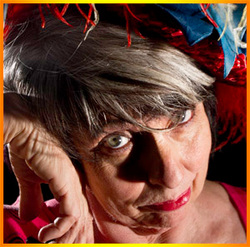 JACQUELINE LAWTON: Why did you decide to get into theatre? Was there someone or a particular show that inspired you? ARALYN HUGHES: As a card carrying feminist, I fell in love with the work of LADIES AGAINST WOMEN a street performance group that used satire to ridicule the anti-feminist backlash of 1980s Reagan-era America, inspiring to me to consider theatre as way of protest and wild, comic improvisation. I was part of a theatre company in Austin (Big State Productions) who around the same time period created a workshop inspired by the Richard Avedon photographic exhibit, "In the American West" that was meant to showcase a response to these photographs through a presentation of original monologues. We had planned to present two performances but because of popular demand, the show ended up running for 8 years! That-- was my real introduction to the theatre. I then took a hiatus from the theatre for almost twenty years and have only recently returned to it full-time in my mid-60s. I felt time was running out and even though I was fearful to come back to it at the age of 65, I was also driven to make it happen. Amparo Garcia-Crow, my director, has been my mentor and inspiration. Because she was also an original company member of Big State Productions, I contacted her about helping me get my story on stage and the last three years we have presented a series of eight original shows under the umbrella title: "Aralyn's Home Economics presents. . . ." The shows have been a hybrid of performance art meets storytelling meets sketch comedy resulting in me "painting my life on a canvas" which means I am creating on stage the life I want to live. A life imitates art experience. JL: Next, tell me a little bit about your writing process. Do you have any writing rituals? Do you write in the same place or in different places? AH: No writing ritual just a roomful of boxes, mostly journals, archival videos, photos, artifacts and the backs of napkins which Amparo was brave enough to sort through to begin directing my stories. Typically I write in spurts, notes on my phone or ipad/computer, mostly I capture ideas about events to remember how I felt, thoughts that tie into whatever "social experiment" Amparo guides me towards so that I become the live subject of "the matter." She listens very carefully to what distracts or obsesses me and off we go into the heart of the subject. In the three year-series of shows we just completed, she has finally graduated me into sitting behind a desk ala Spalding Gray to just tell the story! The idea being to ease into becoming the graceful but loud-mouthed crone. Because I tell my life story, there is no script until after the performance when I transcribe the various approaches to the story. The so called script is changing until I go on stage. Often in performance, the story will evolve and be different. There is more of an outline and notes on what I want to remember to tell so the story flows but in truth, the story becomes more alive than even I can imagine! JL: What inspired you to write XXX? What was the process of developing this piece? AH: Bedicheck Jr. High in Austin, Texas choose me as one of the four most inspiring people in Austin and to honor that, they were painting my face as a mural on the side of the building! I had no idea how they came upon me, I do not have children, I do not know anybody at that school. Maybe they saw my "Keeping Austin Weird" art house on HGTV or my pink pig art car and my sidekick (a Vietnamese potbelly pig who used to perform with me around town) on the Discovery Channel or my visual art which hangs at different locations in Austin, but suddenly there I was, my face painted on the side of the building the size of a semi-truck and it looked like me! While I was there visiting with the students, I was introduced to their art teacher who put me on her email list and started sending me what 30 year olds are into. One day she sends me the Rihanna video called S&M. I opened it and LOVED the visuals of what I saw her doing and I found myself obsessing about her dominant actions and wondered-- what in the world is she doing? Have I had my head in the sand? Is this mainstream? I now know it was a popish stereotype of the BDSM world but I found myself thinking: "If only I was 30 years old!" I became so obsessed, my director said, why don't you research that for your next show! I not only researched it, I tried on the role of dominatrix and the universe of choices and rituals involved. For a 65 year old woman contemplating retirement, it opened up a radical dialogue and practice which ended up changing my life. Not because the practice was ultimately a lifestyle choice for me, but the process of becoming a dom ended up giving me the true to life role of a lifetime! And without knowing how significant it would be to take this practice on with real submissive men in order to yield the monologue XXX, the development of this story ended up taking me into a childhood sexual abuse incident I experienced at the hands of the Baptist deacon that lived across the street from my family in Elks City Oklahoma. To uncover this enlightened me and liberated a lifelong (unconscious) oppression in me. JL: What do you hope audiences will walk away thinking about after experiencing this play? AH: I am saddened by the violence I see in our world and the lack of clarity and ease that exists with relationships between people. What I present is a contradiction or at least a question or two that I hope contributes towards creating a less judgmental world, one in which there is more freedom of choice, and ultimately better communication, more peace (inside and out) and tolerance for diversity in the world--meaning, the more education we have about sexuality, oppression, fetish behavior and the desire for connection, the more understanding there can be for that fine line between pleasure and pain and how ultimately, everyone wants to experience their authentic, true natures, in whatever form that arises. The desire to no longer oppress those who are different--be it because of gender, lifestyle or personal choice is a life-long hope. And a cause for which I have spent a lifetime rallying. About the Artists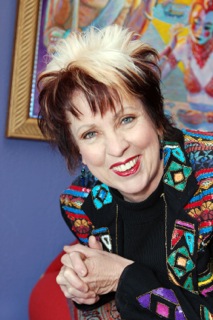 ARALYN HUGHES is a storyteller/performer who for years as been called "The First Lady of the Keepin' Austin Weird movement." She has been a lobbyist at the Texas State Capital for women's issues, having served as Director for the first abortion clinic in Central Texas in the 1970s; she's taught high school Home Economics (and been reprimanded for teaching sex education in the schools) and been a member of various board and commissions in Austin, Texas. A dedicated feminist, she has been a successful business woman and a company member of Big State Productions and various improv companies in town 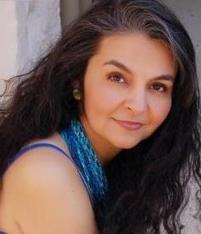 AMPARO GARCIA CROW acts, directs, sings and writes plays, songs and screenplays.
She coaches individuals to follow their dreams BY DESIGN, a creative
and spiritual coaching dialogue that enlivens their art and life! As a playwright her work has premiered Off-Broadway (INTAR, THE WOMEN’S PROJECT), Actor’s Theater of Louisville and been developed at South Coast Repertory. Her films have premiered at SXSW and the Los Angeles International Latino Festival. She is currently in development with STRIP, a burlesque musical she began in residency with Mabou Mines. And in Austin, she hosts the monthly THE LIVNG ROOM: Storytime for Grown-ups. About the Festival UNITED SOLO THEATRE FESTIVAL™ is an annual international festival for solo performances held in New York City. Through a diverse range of one-person shows, we explore and celebrate the uniqueness of the individual. From openly solicited submissions, we stage the most intriguing productions at the highly acclaimed Theatre Row in the heart of the New York City theatre district on 42nd Street. Renowned solo performers as well as new talents have opportunities in many categories (e.g. storytelling, puppetry, dance, multimedia, documentary, musical, improv, stand-up, poetry, magic, drama: tragedy or comedy). The artists also benefit from being presented by United Solo, a company made up of artists and producers with vast experience in solo performance. Submission is open in spring, and selected participants are announced in summer each year. |
My BlogI'm a playwright, dramaturg, and teaching artist. It is here where you'll find my queries and musings on life, theater and the world. My posts advocate for diversity, inclusion, and equity in the American Theatre and updates on my own work. Please enjoy!
Categories
All
Archives
June 2020
Reading List
|
